Sol Cohen
(1967)
|
Born in 1904 in Cape Town Sol entered Guy's Hospital Medical School for his clinical studies where his ability and innovative approach attracted the attention of Sir Heneage Ogilvie who became his lifelong supporter. After obtaining the FRCS he returned to South Africa. Returned to England in 1939 he was appointed at the Southern Hospital, Dartford. His experience of arterial injuries, from the bush in SA and the Dunkirk evacuations led to the award of a Hunterian lecture in 1943 on traumatic arterial spasm.
Sir Thomas Lewis (a Cardiologist who was awarded the Royal Society's Royal Medal in 1927 for his researches on the vascular system) was so impressed with this work that Cohen was appointed to the Medical Research Committee on vascular injuries.
With the advent of the Health Service, he was appointed consultant surgeon to the Medway and Gravesend Group of Hospitals and Joyce Green Hospital, Dartford. He gave a second Hunterian lecture in 1952 describing his experience with aneurysms and arteriovenous fistulae.
He wrote widely, mainly in the vascular field, and was for many years a much-valued assessor of articles submitted to the medical press.
He died on 1 November 1989, aged 85.
From Plarr’s Lives of Fellows (RECs Eng.)
|
Felix Eastcott
(1971)
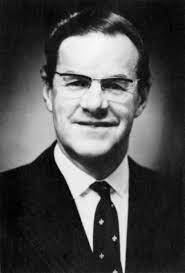
|
He was born in Montreal, Canada, on 17 October 1917. His family returned to England in 1920 and he was educated in Plymouth and studied medicine at St Mary’s Hospital Medical School. He was house surgeon at the Hammersmith Hospital under Grey Turner and Dick Franklin, where he met a theatre nurse, Doreen Joy (‘Bobbie’). They were married in 1941.
During the war he reaching the rank of surgeon lieutenant-commander, Post war he passed the final FRCS at the sixth attempt. In 1949, he travelled to the Peter Bent Brigham Hospital, Boston, where he came under the surgical mentorship of Charles Huffnagal and learned the latest techniques of vascular surgery.
On his return, he passed his masters in surgery, gave a Hunterian Lecture on arterial replacement with grafts, and became assistant director (honorary consultant) of the surgical unit at St Mary's under Charles Rob (who would later perform the UK's first deceased donor human-to-human kidney transplant).
The first carotid endarterectomy.
In 1954 Felix operated on Ada Tuckwell, who was suffering recurrent TIAs and had a short stenosis of the internal carotid artery. May 19th was a cold day and the operating theatre was chilled. Ice packs were placed over the patient to reduce the risk of brain damage. Felix remarked that you could almost hear the nurses’ teeth chattering. Happily, the operation was successful and the patient lived for another 20 years without neurological symptoms.
In 1973 he was the King’s Fund travelling fellow to Australia and New Zealand. He received honorary fellowships from the Royal Australasian College of Surgeons, the American College of Surgeons and the American Surgical Association. He received the Fothergill gold medal of the Medical Society of London 1974 and the Galen medal of the Worshipful Society of Apothecaries in 1993. At RCS Eng., he was vice-president from 1981 to 1982, and was acting president for a few weeks after the untimely death of Sir Alan Parks. He was a Hunterian professor and Bradshaw lecturer and was awarded the Cecil Joll prize.
He wrote the book 'Arterial surgery' (London, Pitman Medical).
Long after his retirement, Felix would attend early morning meetings in the vascular unit at St Mary’s.
Felix always supported the music society at St Mary’s and sometimes participated. He loved to play the piano and did so most days after dinner. He flew his own Tiger Moth. He was an elegant skier, an accomplished linguist and a member of the Garrick Club. He contributed to the design for the first Vascular Society tie, based on a postcard received from Dickson Wright (consultant surgeon at St Mary's and later Vice-President of RCS Eng. who in retirement would suffer a stroke) showing an artery dancing with a vein. This design has since been used for the Vascular Society Broach.
He died on 25 October 2009.
From Averil Mansfield (abridged)
|
Prof Sir Geoffrey
Slaney
(1974)
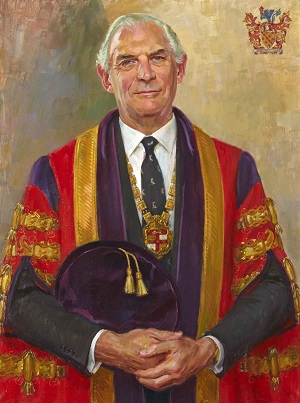
|
He was born in West Hallam, Derbyshire, on 19 September 1922. Geoff was awarded a scholarship to Brewood Grammar School, where he became head boy. His first year at Birmingham University he read physics. He enjoyed the subject, especially since the department was engaged in top secret wartime Government research. He entered medical school with a scholarship in 1941. He was awarded both junior and senior surgical prizes and qualified with a distinction in surgery in 1947. He spent the following year as a house surgeon at Birmingham General Hospital, conspiring with the ward sister to introduce intravenous fluids, unbeknownst to his chief. In 1948 he started National Service as a captain in the Royal Army Medical Corps at Catterick in Yorkshire. He then became a registrar at the London Hospital and in Coventry, where he met his future wife, Jo.
In 1955 he was offered a one-year post at Cook County Hospital in Chicago with Warren Cole, the preeminent American academic surgeon of the day. In Chicago he first saw vascular surgery, considered 'futuristic' on this side of the Atlantic at the time. On returning to Birmingham, he became a lecturer in the department of surgery led by Alan Stammers. He was influenced greatly by Brian Brooke (pioneer of surgery for Ulcerative Colitis), both in technical innovation and open direct dialogue with patients and relatives. He was promoted to senior lecturer in 1959, to a chair in 1966 and to the Barling professorship and head of department in 1971.
He and Frank Ashton worked together to develop a vascular unit for five million people and received referrals from all over the UK and abroad. Geoff embraced the national and international surgical scene with enthusiasm and success. He acquired 14 visiting professorships throughout the world, gave around 160 eponymous lectures, received seven honorary fellowships, edited surgical journals and wrote numerous book chapters and scientific papers. He particularly enjoyed examining for nine universities, and had a long-standing commitment to promoting racial equality in surgical training in South Africa, which he visited as an external examiner over many years.
He was elected to RCS Eng. Council in 1975, which elected him to the presidency in December 1982. His predecessor, Sir Alan Parks, had died in office and he had to take over with no warning during the meeting in which he was elected. He was a popular and successful president, leading a major and essential reform of the career structure of surgeons in training. He was invested as a KBE in 1984.
He inspired many surgeons who followed him and was one of the great leaders of his generation.
Outside of surgery, he was a keen sportsman and was very pleased to make 55 not out for the Council cricket team at Down House when he was 62. In retirement, he enjoyed fishing in the Wye valley. He developed an interest in sculpture and in his usual style studied art at Dudley College at the age of 80.
He died on 29th January 2016
From Penny Slaney (abridged)
|
Prof JB Kinmonth (1973)
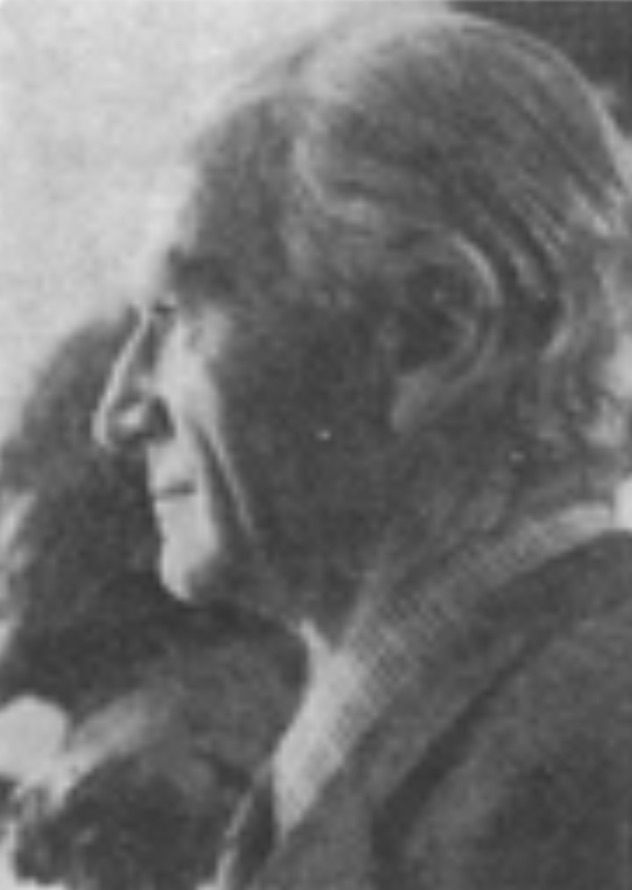
|
John Bernard Kinmonth, the elder son and eldest of four children of Dr George Kinmonth and Delia Kinmonth (née Daly), was born on 9 May 1916 in Lisdoonvarna, County Clare, Ireland. As a result of the troubles the family migrated to England in 1920. Dr George Kinmonth set up his general practice in Dulwich. After education at Dulwich College Preparatory School and Dulwich College, where he passed the London First MB as an external student, John entered St Thomas's Hospital and qualified in 1938. Appointed as house surgeon there he then became surgical registrar and resident assistant surgeon before entering the RAF medical service as a surgical specialist in 1943. He attained the rank of Wing-Commander. After war service was spent mainly in West Africa. He returned to civilian life as a surgical research assistant at St Bartholomew's Hospital in 1947. There followed two years as a research fellow in Professor Churchill's department of the Harvard Medical School, Massachusetts General Hospital. On returning from the USA, he became assistant director of the surgical professorial unit at St Bartholomew's Hospital under Sir James Paterson Ross. In 1955 he was appointed surgeon to St Thomas's Hospital and director of the surgical professorial unit there in succession to Professor George Perkins. Kinmonth had to overcome many problems, notably a lack of accommodation in his extensively war damaged hospital, but he always acknowledged the help and support which he then received from Norman Barrett.
During the ensuing years he made outstanding contributions to surgery, especially in the peripheral vascular field. However, he was responsible for setting up the cardio-pulmonary bypass work which he was able to hand on as a going concern to his later appointed cardiac surgical colleagues. In 1962, in collaboration with two colleagues in the USA (Charles Rob of Rochester, New York, a former student contemporary, and Fiorindo Simeone of Boston) he published a combined work on vascular surgery.
Presidency of the European Society of Cardiovascular Surgery followed in 1968, and of the Vascular Surgical Society of Great Britain in 1973. He was also Vice-President of the International Society of Cardiovascular Surgery and became an Honorary Member of surgical and vascular surgical societies and allied bodies in many overseas countries, notably Brazil, Ceylon, Denmark, France, Jamaica, Peru and the United States. It was for his seminal research and publications on the lymphatic vascular system that he earned international renown, though many of his colleagues were slow to recognise the practical implications of his work. This brought recognition in the twice awarded Julius Mickle Fellowship of the University of London; the Asellius Medal of the International Society of Lymphology and honorary membership of that society.
He had the distinction of being the first Honorary Fellow of the Royal College of Radiologists in 1975 and became an Honorary Fellow of the American College of Surgeons in 1976. He was also a member of the German Society of Lymphology and Freyer Medallist of University College, Galway. During this period, he undertook many distinguished overseas lectureships, notably an Arthur Sims Commonwealth Travelling Professorship on behalf of the Royal Colleges when he and his wife visited India, Pakistan and Sri Lanka in 1962-63. He was Arris and Gale Lecturer in 1953 and Hunterian Professor of the College in 1954 and was elected to Council in 1977.
During the last thirteen years of his life, intermittently at first and later more persistently, he was dogged by ill health due to recurrent pancreatitis which was long thought to be due to a benign stricture in the main pancreatic duct. He underwent three major operations before the diagnosis of pancreatic carcinoma was established by ERCP examination and biopsy. Few but his closest friends and colleagues were privy to all this, but during that period he published his pioneer book on the lymphatics in 1972 followed by a superb second edition a few months before his death.
Apart from his outstanding contributions to surgery he was a keen student of music and opera, and of ornithology and photography. He and his brother had been introduced to sailing by an uncle; later in life, with his friend Dr Richard Warren of Boston, Massachusetts, he became joint owner of a Block Island fibreglass yawl in which he much enjoyed ocean cruising, a subject on which he wrote several articles. John had married Kathleen Godfrey, a daughter of Admiral W H Godfrey, in 1947 and they had two daughters and two sons, the elder of whom is medically qualified. He faced his last few years with dignity and courage and underwent a fourth laparotomy only a week before he died on 16 September 1982. He was survived by his younger brother, Maurice (a plastic surgeon in Leicester), and two sisters, and by his wife, Kathleen, and four children.
|
Frank
Cockett
(1990)
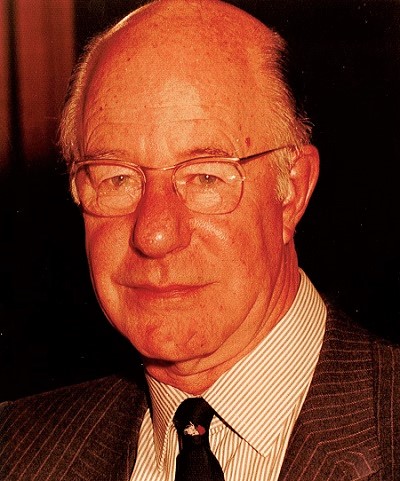
|
Born in Rockhampton, Australia, on 22 April 1916, Frank spent his early life in Tasmania before coming to England in the 1920s. He was educated at Bedford School and then the City of London School, before winning a scholarship to St Thomas's Hospital Medical School, where he gained a first class honours degree in physiology before qualifying in medicine just before the outbreak of war.
He became a house surgeon at St Thomas' in 1940. Throughout the Blitz, he was one of a small band of less than 10 doctors who kept the largely evacuated hospital open. Operating day and night in makeshift theatres in the basement, where he also slept. His letters home make vivid reading and were later published as 'The war diary of St Thomas's Hospital 1939-45' (Newport, Gwent, Starling, 1991).
After house jobs, he became a resident surgical officer in Guildford, before joining the Royal Air Force in 1942 and serving abroad as a squadron leader, mainly in Malta and Gozo. Here he saw the end of the siege of Malta and the beginning of the invasion of Sicily. This period of his life was described in his book 'The Maltese penguin' (Smith-Gordon & Co Ltd, London, 1990).
In 1945 he married and returned as a civilian to a junior surgical post at St Thomas', before becoming a senior lecturer in surgery. He was put in charge of the busy leg ulcer clinic. He began the research which was to lead in time to his pre-eminent position as an international authority on venous disease. He investigated his patients using the new technique of venography and performed numerous open operations. By 1953 he had established that lower leg ulcers were not caused by conventional varicose veins, as previously had been thought, but by incompetent ankle perforating veins and that the appropriate treatment was their surgical ligation. This work was published in The Lancet ('The ankle blow-out syndrome; a new approach to the varicose ulcer problem.' (Lancet 1953 Jan 3;1[6749]:17-23). This work resulted in the award of a master of surgery degree. He was appointed a consultant and in 1956, with Harold Dodd, published a 400-page textbook 'The pathology and surgery of the veins of the lower limb' (Edinburgh, London, E & S Livingstone), which immediately became the definitive text.
Although appointed a general surgeon, his vascular interest rapidly became dominant. He became chairman of the Venous Forum at the Royal Society of Medicine.
He was a popular teacher and he and his wife regularly entertained students at their home. Students, staff and colleagues all knew him as someone with a total lack of pomposity and a man of many unsung acts of kindness and thoughtfulness.
Outside of surgery, Cockett was a keen sportsman; skiing, squash, tennis, swimming, but above all sailing, which he had learned while stationed in Malta. He became the owner of a series of boats, culminating in a steel-hulled ocean racing yacht appropriately named Saphena, its dinghy being called Varix. His interest in sailing led to an interest in marine art. He became an authority on early English marine paintings and an adviser to Christie's. He published two books on this subject.
Tragedy struck his private life in 1958 when his wife Felicity Anne (née Fisher) was killed in a road traffic accident, leaving him with three small children. Two years later he married Dorothea Newman, a physiotherapist at St Thomas'. They had twin sons.
He died on 17 January 2014.
From Sir Barry Jackson (abridged.)
|
Prof Crawford Jamieson (1995)
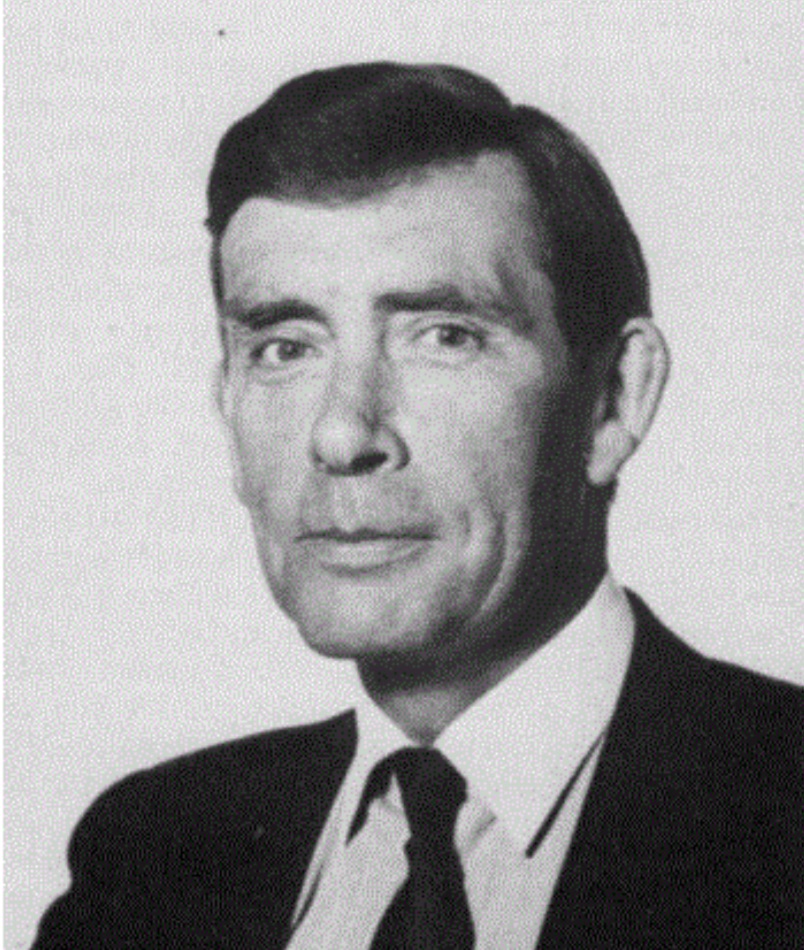
|
Born 28th September 1937, he was educated at Dulwich College, before proceeding to Guy's Hospital Medical School, from where he graduated in 1960 with honours in surgery. After house jobs, he spent time as a ship's doctor working on a P&O liner, before becoming a senior house officer on the academic surgical unit at St Mary's Hospital, where he was greatly influenced by W (Bill) Irvine (chair of Surgery, having suceeded Charles Rob). After passing his FRCS in 1964, he was appointed as a registrar at Addenbrooke's Hospital, Cambridge, where he spent 18 months working with Brian Truscott (Lecturer and specialist in thyroid and breast surgery) and John Withycombe (who would become a urologist).
He returned to St Mary's as a registrar, first on the surgical unit and then on the thoracic unit. In 1967, he was appointed as a lecturer in surgery with honorary senior registrar status. Apart from his clinical duties, he was actively involved in research into aspects of gastric secretion, which led to the first of his more than 120 publications. He won the Warren Low award of the medical school, was awarded a Wellcome research fellowship and, in 1968, spent a year as Wellcome research fellow in the department of surgery, Tulane University, New Orleans, at the invitation of Oscar Creech (internationally recognized as a leader in surgery of the heart and blood vessels. He received two gold medals from the American Heart Association).
During this year he studied aspects of tumour immunology and the effects of laser radiation on tumour cell growth, work which led to several publications (one in Nature) and, in 1970, the award of an MS degree and a Hunterian lecture entitled 'Immunological resistance to tumours'. Also in that year, he was promoted to senior lecturer in surgery and assumed the position of assistant director of the surgical unit. In 1972 he was appointed as a part-time senior lecturer in surgery and director of the vascular surgical unit at the Royal Postgraduate Medical School, Hammersmith Hospital, a post which he held for 10 years. In 1973 he was appointed as a consultant surgeon to St Thomas' Hospital, where remained until his retirement in 1997.
Although having trained in vascular surgery, his appointment at St Thomas' was as a result of his strong clinical interest and academic standing in surgical oncology and for several years he confined his practice at St Thomas' to this area. But slowly he began to increase the amount of vascular work he undertook at St Thomas', until this discipline became his overriding interest. A steady flow of original publications in peer-reviewed journals, leaders and chapters in textbooks led to him being asked to lecture both at home and abroad on various aspects of arterial and venous surgery. He was an invited lecturer overseas in countries as varied as Italy, Germany, South Africa, Japan, Australia, New Zealand and the USA, and gave numerous eponymous lectures. He edited five textbooks on aspects of vascular surgery. In 1990 he delivered the prestigious Kinmonth memorial lecture to an international audience and, in 1995, became president of the Vascular Surgical Society of Great Britain and Ireland. He also became a trustee of the British Vascular Foundation. Over and above his many contributions in the vascular field, for much of his consultant career he was closely involved with the British Journal of Surgery, being editor for 10 years and then chairman of the board for another eight years. During that time he oversaw a transformation in the standing of the journal, which became international in its content and readership and universally recognised as one of the world's leading surgical journals.
In the early 1990s, at a time of radical changes in the provision of secondary care, he became a member of the trust executive of the newly merged Guy's and St Thomas' hospitals and assumed the role of trust group clinical director, surgical services. In this capacity he was responsible for integrating the surgical services of the two hospitals, a task which was not easy but one which he fulfilled with distinction. He was also actively involved in workforce planning for the new trust. In these management roles he was instrumental in forging the successful merger of the two hospitals into a joint trust, while largely retaining the individual ethos of each campus.
A man of keen intellect and warm outgoing personality, Crawford Jamieson was a bon vivant, a wonderful raconteur, a superb host and an enthusiastic supporter of country pursuits. Proud of his Scottish ancestry, he could also dance a large number of Scottish reels, flamboyant in his tartan kilt and sporran, something which always featured in his memorable New Year's Eve parties. In 1961 he married Gay Gillibrand, a fellow doctor, and they had a son, Crawford Philip, who became a consultant physician in Norwich. In 2004, after Gay's death from cancer, he married Daphne Bolton, a St Thomas' theatre sister. Sadly, their happiness was short-lived, for three years later he developed a carcinoma of the oesophagus and, despite excisional surgery and adjuvant therapy, died at home in Long Sutton, Hampshire, on 17 July 2009.
Author:
Sir Barry Jackson
|
Prof Sir Peter
Bell
(1999)
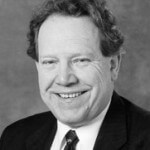
|
Peter was Emeritus Professor of Surgery at the University of Leicester and honorary consultant surgeon to the University Hospitals of Leicester NHS Trust. When Peter set out his plan to establish a transplant unit in Leicesterin 1975, he was told there was no money. He went on and established the unit anyway.
He was President of the European Society for Vascular Surgery and the International Society of Vascular Surgeons. His special interest is research in the fields of organ transplantation and vascular and he has published more than 700 papers in these areas. He has also written a number of textbooks on vascular surgery and transplantation.
He co-founded the Circulation Foundation with fellow vascular surgeon Mr Antony Chant.
|
Prof Roger Greenhalgh
(2000)
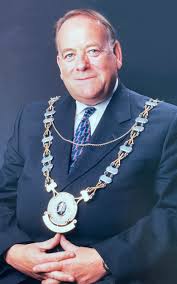
|
Roger was born in Derbyshire. He went to Ilkeston Grammar School and was the first in his family to attend university. At Clare College, Cambridge, his medical tutor predicted that he would be a surgeon. He moved from Cambridge to St Thomas’s Hospital (London). The pioneer vascular surgeon, Peter Martin, inspired him. Whilst in training he won the ASGBI Moynihan Travelling Fellowship.
He joined the surgical consultant staff as senior lecturer at Charing Cross Hospital in 1976. He went on to become Professor of Surgery and Dean of the Charing Cross & Westminster Medical School (1993-7).
His long-time research partner, was Professor Janet Powell (Imperial College, London).He published more than 300 original papers. The most important of his trials were the UK Small Aneurysms Trial (UKSAT) and the UK endovascular aneurysm repair (EVAR 1 & 2) trials.
He played a pivotal role in the creation of both the European Society for Vascular Surgery (ESVS) and its journal. He was chairman of the EJVES editorial board (1987-2003). He was President of the European Board of Surgery for the European Union of Medical Specialists (1998 -2002) and the European Board of Vascular Surgery (2002-6). He was an honorary Fellow of the American College of Surgeons and the first “Living Legend”, an International Lifetime Achievement Award, from the Society for Vascular Surgery (SVS).
He founded the Charing Cross series of international symposia (CX). He presided over the 45th symposium earlier this year and was working on the CX 2024 programme up to his last days.
He rowed at St Thomas’s Medical School and remained a long-term supporter of the Imperial College Boat Club. His love of skiing saw him create the Association of International Vascular Surgeons (AIVS). Roger was supported throughout by his Austrian wife, Karin, who died in April 2020 from COVID-19.
He died on 6th October 2023
|
Prof Averil Mansfield
(1997)
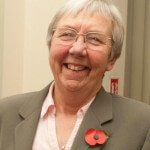
|
Averil was born in 1937 in Blackpool. Her mother suffered DVT and a PE during her difficult birth, which later influenced Averil’s specialism in her medical career.
She began her career at the Royal Liverpool University Hospital, and became a consultant vascular surgeon there in 1972 and later a lecturer in surgery at the University of Liverpool. She then moved to London in 1980 to work at Hillingdon Hospital. Two years later, she was appointed by St Mary's Hospital in Paddington as a consultant vascular surgeon.
She was an honorary senior lecturer at St Mary's Hospital Medical School, which merged with the Imperial College School of Medicine in 1988.[1][3] She remained at St Mary's for the rest of her career, while also serving as an honorary consultant in paediatric and vascular surgery at Great Ormond Street Hospital.
In 1991, Mansfield was the founding chairwoman of the RCS's Women in Surgical Training committee. In 1993, she was made a professor of vascular surgery at St Mary's Hospital, making her the first female professor of surgery in the United Kingdom.
She was appointed Commander of the Order of the British Empire (CBE) in 1999 for services to surgery and women in medicine.
Mansfield retired from surgery in 2002.[4] She was made a Fellow of the Royal College of Physicians in 2005 and was elected president of the British Medical Association in 2009–2010.
In 2012 she was voted one of "100 Women Who Have Changed the World" by The Independent on Sunday.
She founded Women in Surgery, a Royal College of Surgeons initiative to encourage more women to enter the field In May 2018, she was given a NHS Heroes Award.
Mansfield was appointed Dame Commander of the Order of the British Empire (DBE) in the 2023 Birthday Honours for services to surgery and equality in medicine.
|
Prof Kevin Burnand
(2003)
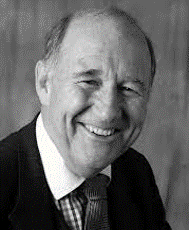
|
Kevin Burnand MS FRCS is Emeritus Professor of Surgery at King’s College, University of London (St Thomas’ Hospital). Professor Burnand is a past president of the Surgical Research Society (2007–8) . Now retired, Professor Burnand treated the full spectrum of vascular disease during his distinguished career but had an international reputation as a leader in the field of venous disease. He continues his long association with the SRS and is known for promoting high academic standards when delegates present their work to the society.
|
Prof Ross
Naylor
(2012)
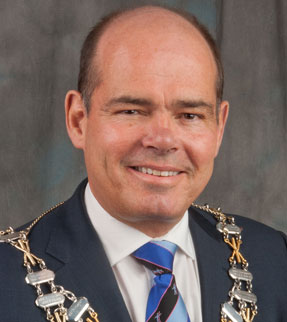
|
Ross was Professor of Vascular Surgery at the Leicester Vascular Institute.
He has coedited three textbooks of vascular surgery, authored 77 book chapters and co-authored over 600 peer reviewed publications. His specialist clinical and research interests are in carotid and cerebral vascular disease. Professor Naylor has served on the Councils of the European Society for Vascular Surgery (ESVS; 2010-2016) and the World Federation of Vascular Societies (2018-current).
He has served on the Editorial Boards of the British Journal of Surgery (2000-2005), the Journal of Vascular Surgery (2003-2008; 2016- 2020) and the European Journal of Vascular & Endovascular Surgery (EJVES; 2006-2016). He is a past Editor in Chief of EJVES and was awarded an honorary membership of the ESVS in 2018. He has served as co-chairman of the 2017 and 2022 ESVS guidelines on the management of carotid and vertebral artery disease.
|
Prof Chris
Imray
(2020)

|
As a vascular surgeon he has a particular interest in the management of the high-risk carotid patient. He has introduced novel trans cranial Doppler directed intravenous antiplatelet therapies into the management of neurologically unstable patients. Other surgical interests include high risk re-do renal transplantation. An over-arching theme, drawing research findings from hypoxic individuals at altitude, is the fitness of patients for surgery. His PhD is on the hypoxic and ischaemic brain.
Chris started climbing whilst at school and has continued to travel the world to fulfil this passion. His altitude research began with the Birmingham Medical Research Expeditionary Society in late 1980s, and has continued with the Caudwell Xtreme Everest Research Group and CASE.
He took part in the 2006 Xtreme Cho Oyu expedition to Tibet, as one of the medical officers and was the Deputy Climbing Leader of the 2007 Caudwell Xtreme Everest Expedition. He summited both Cho Oyu (8201m) and Everest (8550m) and has the dubious distinction of having the second lowest arterial gases ever recorded in an adult (at 8,400m).
He is a member of the Alpine and Climbers Club and sits on the Mount Everest Screening Committee.
He is an acknowledged expert in frostbite and non-freezing cold injuries and runs the UK internet telemedicine frostbite service for the British Mountaineering Council.
Although he has published over 125 peer review papers on various subjects including altitude medicine, cold injury, vascular surgery and renal transplantation, he remains an active mountaineer and altitude researcher.
Case medicine
|